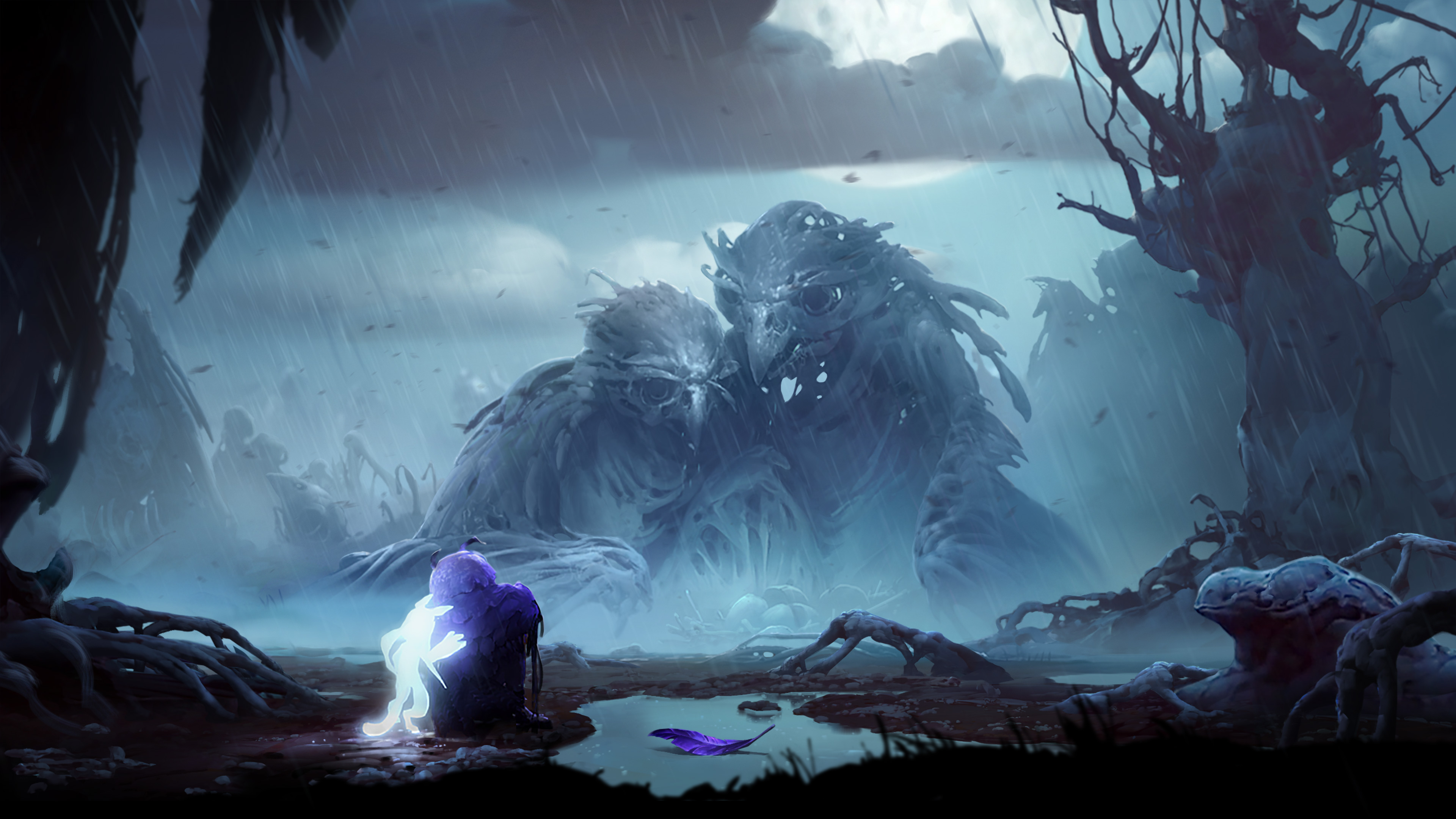
There are a few moments that place Ori on Ku’s back and let players control the bird, but they only manifest in highly structured, linear passages and are mechanically simple, especially compared to the rest of the game. It’s disappointing that developer Moon Studios doesn’t do anything with these themes of resurrection, reincarnation, and reiteration in terms of Will of the Wisps’ gameplay.

If you have played The Blind Forest, the parallels of Ori’s adoption in that game and Ku’s in Will of the Wisps create a sense of reprisal and cyclical destiny. Not knowing who Ori is or why him, Naru, and Gumo adopting Ku has significance will leave you staring blankly at a weird, glowing, rabbit-monkey-thing’s performative parenthood. It’s the kind of setup that requires prior experience with Ori’s world to contextualize the truncated emotionality of the game’s opening minutes. However, as Ori rides the winds with Ku, a gigantic, bone-covered owl throws them off course and sends them careening towards a new forest that has its own set of darkness-related problems. Ever the thoughtful forest sprite, Ori finds one of Kuro’s feathers and gives it to Ku, inspiring the little bird to finally take flight. Will of the Wisps picks up exactly where The Blind Forest left off: Ori, Namu, and Gumo watch as Kuro’s egg hatches a mathematically adorable baby owl named Ku-it’s tiny, has big eyes, and tries (and fails) to fly with its undersized wings.
KU ORI AND THE WILL OF THE WISPS SERIES
It’s a sequel in a series that’s still at odds with itself. But like The Blind Forest, Will of the Wisps mistakes sentimentality and cutesy aesthetics for profundity. There’s no doubt that it’s a good, fun game. Ori and the Will of the Wisps is the Platonic ideal of a sequel: It’s bigger, better, and more beautiful than its predecessor, while retaining and complicating its surprisingly skillful platforming and taking out pretty much everything that sucked. It’s when the mechanics work towards making the player feel the story and the world of the game more deeply that these kinds of platformers stand out. Inside’s mind-controlling puzzles make total sense in that game’s particular dystopia. Braid is so memorable because of how its time-based platforming fits in with the themes of making mistakes and living with the consequences. The best emotional platformers are the ones where the mechanics come from the story.

It’s the kind of sentimental, self-serious storytelling that started with Braid and continues (granted, with more subtlety) in games like Limbo and Gris (or less subtly in Celeste). But there’s another subgenre of tone that’s incredibly popular with indie developers who want players to “feel things” while jumping over obstacles and killing enemies.

The most obvious is the “Metroidvania” (yes, I know) subgenre of platformers. There are two separate, overworked, de facto genres that both Ori and the Blind Forest and its sequel, Ori and the Will of the Wisps, lean on.


 0 kommentar(er)
0 kommentar(er)
